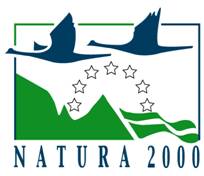
Anthemis glaberrima
- This plant species was first described as
Ammanthus glaberrimus
from the Austrian botanist Karl Rechinger, who collected the
plant from Agria Gramvousa on the 20th of April 1942.
- It is a small annual plant, similar to chamomile. It has
flexuous stems ranging from 2-30 cm and many capitulas with a
diameter of up to 1 cm. It flowers from April until May. Its
fruits (achenes) mature at the end of May and the plant then dies.
- The plant species Ammanthus glaberrimus
grows among calcareous coastal rocks on the islets of Imeri and
Agria Gramvousa and nowhere else in the world. These islets are
located along the NW corner of Crete.
- It is protected by the Greek Presidential Decree 67/81 and the
Bern Convention, and is included in the Annexes II* and IV of
the Habitats Directive. It is considered as one of the Top 50
most threatened Mediterranean island plants according to IUCN
(The World Conservation Union). It is an endangered species
according to the Red Data Book of Rare and Threatened Plants of
Greece, because the areas where its populations grow are very
limited and they are both vulnerable and susceptible to many
types of threats (e.g. climatic changes).
- To date, it is not yet known whether the plant has pharmaceutical
properties and thus it is not utilised by man.
- In the framework of the CRETAPLANT project, the Micro-reserve of
the plant has been set up in an area of 4.5 hectares on the
northern side of the islet Agria Gramvousa.





